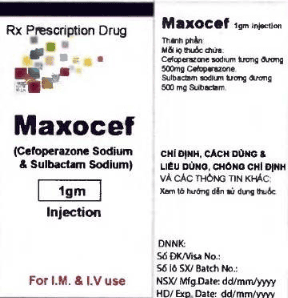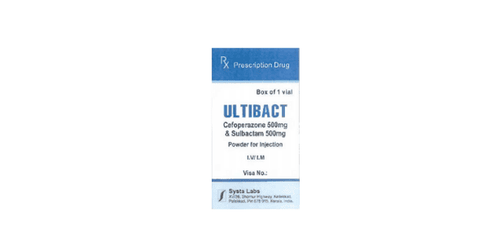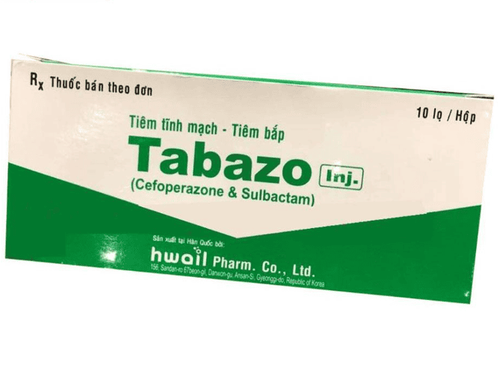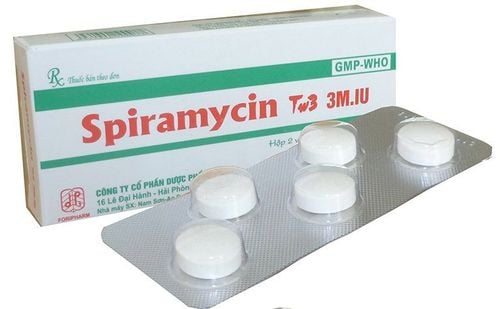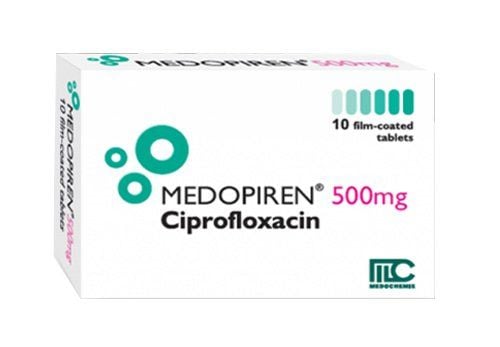This is an automatically translated article.
Libracefactam 1.5g belongs to the group of anti-parasitic, anti-infective, anti-viral, anti-fungal drugs. The drug is indicated for the treatment of diseases associated with bacterial infections such as blood infections, respiratory infections, meningitis infections.1. What are the uses of Libracefactam 1.5g?
Libracefactam 1.5g has the main ingredient Cefoperazone (as cefoperazone sodium) 1g; Sulbactam (as sulbactam sodium) 0.5g, is used in the treatment of infections caused by susceptible bacteria such as:Treatment of upper and lower urinary tract infections. Upper and lower respiratory tract infections. Intra-abdominal infections such as cholangitis, cholecystitis, peritonitis, peritonitis. Sepsis . Meningitis. Skin and soft tissue infections. Osteoarthritis infection. Genital tract infections such as endometritis, pelvic inflammatory disease, gonorrhea. Because the ingredient sulbactam / cefoperazone has a broad antibacterial spectrum, Libracefactam 1.5g is very effective in the treatment of bacterial infections even though it does not need to be combined with other drugs. However, sulbactam/cefoperazone can be used in combination with other antibiotics if necessary. Note: When combined with Aminoglycosides, renal function must be checked during the course of treatment.
Contraindications:
Do not use the drug for patients with a history of hypersensitivity to Cefoperazone or Penicillins, betalactamases inhibitors.
2. Dosage and how to use Libracefactam 1.5g
2.1. How to take Libracefactam 1.5g
How to prepare the drug for intravenous injection:Libracefactam 1.5g vial is mixed with 4ml of 5% dextrose solution, ~ 0.9% sodiumchloride or distilled water for injection. Intravenous injection should be done for a minimum of 3 minutes. For infusion, the solution must be diluted in 20ml of solvent and infused over 30-60 minutes. How to mix drugs for intramuscular injection:
With solutions that can be used for intramuscular injection, in order for the drug to be used, it needs to be mixed through the following 2 steps: First, mix the solution with 3ml of distilled water for injection. When the solution has dissolved, add 1 ml of 2% lidocaine solution. The finished product is a solution of 4mL including a solution containing 250mg/ Cefoperazone and 0.5% lidocaine. The solution after reconstitution is stable for 24 hours at a temperature below 25 degrees Celsius.
2.2. Dosage of Libracefactam 1.5g
Dosage applied to adult patients: Use from 1-2 g of Cefoperazone/day, used for intramuscular or intravenous injection, divided into 12 hours. For severe infections, patients can increase the dose up to 8 grams of Cefoperazone/day.The maximum daily dose of Sulbactam is 4g/day, in this case it is necessary to add Cefoperazone or use the drug in a ratio of 1:2 (Sulbactam: Cefoperazone).
In the case of patients with renal failure: Need to adjust the dose of the drug because the elimination time of Sulbactam will be increased. Specifically as follows:
Creatinine clearance in the range of 15 - 30 ml/min, the adjusted dose is 1g Sulbactam twice daily. With Creatinine clearance <14 ml/min: 0.5g Sulbactam twice daily. For patients with liver failure: Most drugs will be excreted in the bile, the elimination time of Cefoperazone will be longer in patients with severe liver failure. Patients can still use the drug, but the dosage should be adjusted according to the advice of the doctor, especially for people with both liver and kidney failure.
3. Drug interactions
The drug should not be mixed with Ringer lactate solution or with 2% lidocaine, hydrochloride solution, because the mixture of these two drugs causes incompatibility. Using alcohol products together with drugs will inhibit aldehyde dehygrogenase leading to a reaction that causes accumulation in the blood with symptoms such as sweating, tachycardia. This reaction also occurs when combining other cephalosporin antibiotics with 2 components cefoperazone / sulbactam. Should not be used together with Aminoglycoside antibiotics, it will reduce the effectiveness of the drug. If co-administration is required, the time for infusion should be divided, and the infusion tube should be washed between the two doses. Effects on test results, in particular urine glucose tests may be falsely positive when administered with Benedict or Fehling's solution. Positive antiglobulin test (Coomb). The drug should not be mixed with diphenhydramine, ketamycin B, meclofenoxate, potassium magnesium, doxycycline because they can cause precipitation. Be careful when using the drug with anticoagulants, non-steroidal anti-inflammatory drugs, thrombolytic drugs because it can cause bleeding as a side effect.4. Libracefactam 1.5g . side effects
The drug is well tolerated, so the majority of side effects will be mild to moderate.A common side effect is pain at the injection site, especially when using the drug for intramuscular injection. In rare cases, phlebitis may occur. Gastrointestinal reactions such as nausea, vomiting and diarrhea. Skin reactions causing redness and itching of the skin. Blood and lymphatic system reactions such as thrombocytopenia/leukopenia, anemia and eosinophilia. Blood-related reactions are likely to go away on their own if the patient stops taking the drug.
5. Be careful when using Libracefactam 1.5g
Patients who are allergic to penicillin should be cautious when using cefoperazone and sulbactam. Some reports have been made in patients receiving cefoperazone and other broad-spectrum antibiotics that may cause pseudomembranous colitis. Patients absolutely do not use alcohol during the use of the drug. For women who are pregnant: Cefoperazone and Sulbactam can cross the placental barrier. Therefore, the drug should be used in pregnant women only when absolutely necessary. Lactation: Only small amounts of Cefoperazone and sSulbactam are excreted in human milk, so caution should be exercised when administering the drug to a nursing mother. Above is all information about the drug Libracefactam, patients need to carefully read the instructions for use, consult a doctor / pharmacist before using. Absolutely do not arbitrarily buy Libracefactam to treat at home because there may be unwanted side effects.Please dial HOTLINE for more information or register for an appointment HERE. Download MyVinmec app to make appointments faster and to manage your bookings easily.




